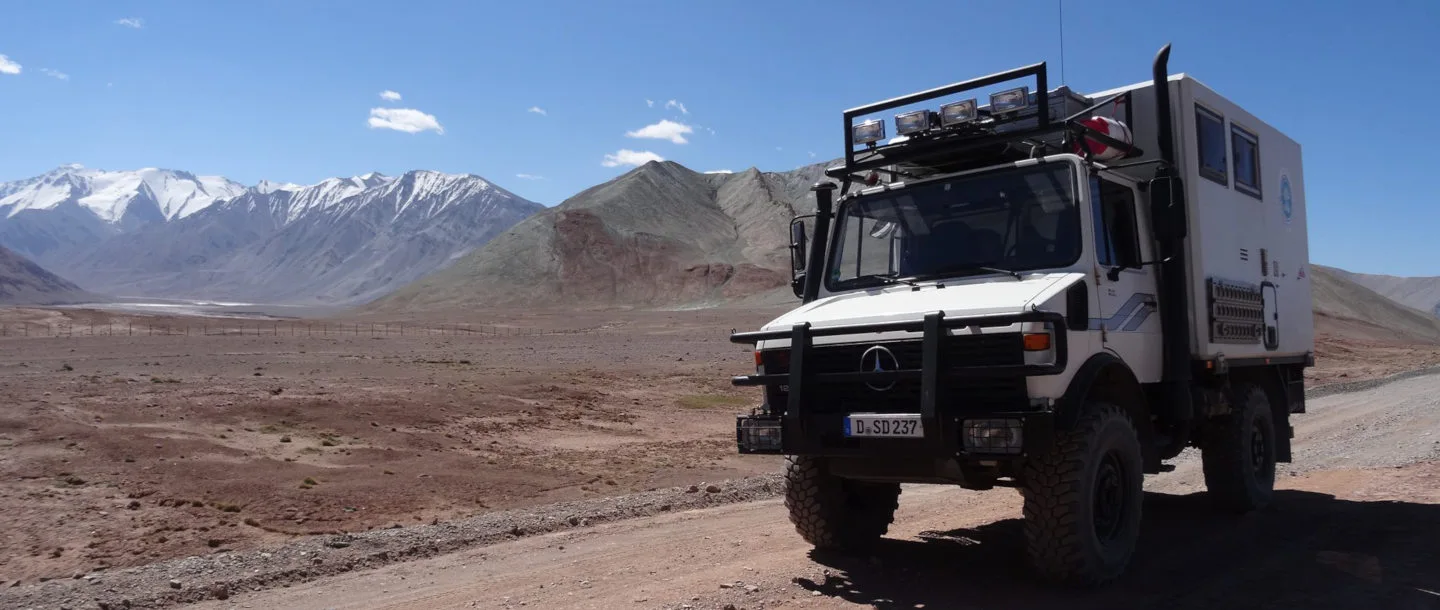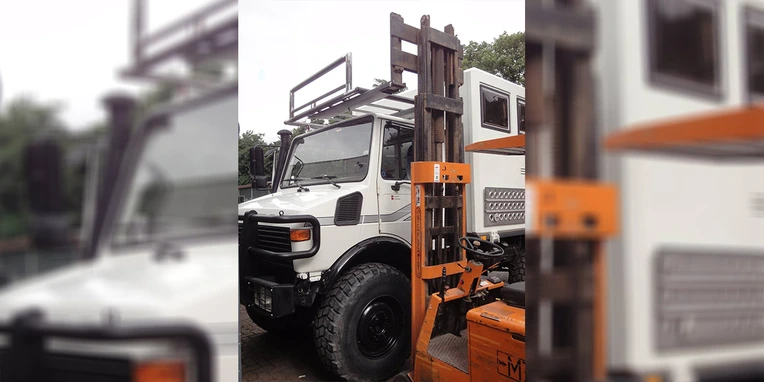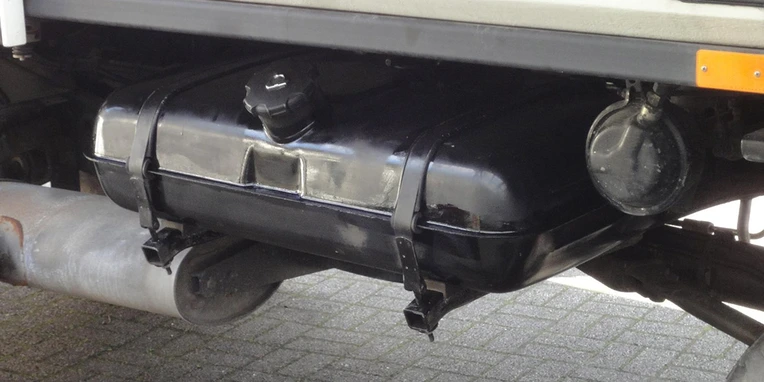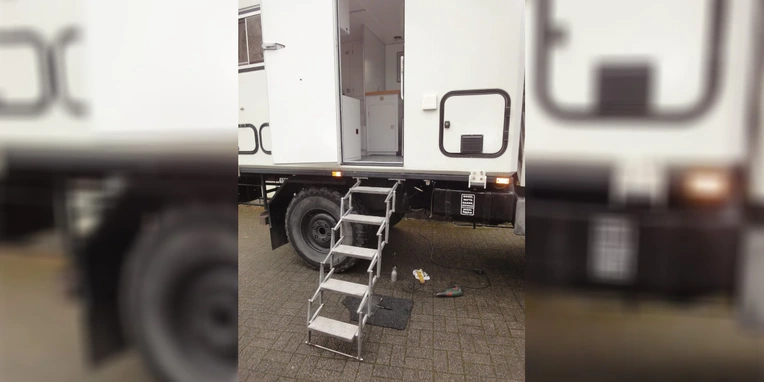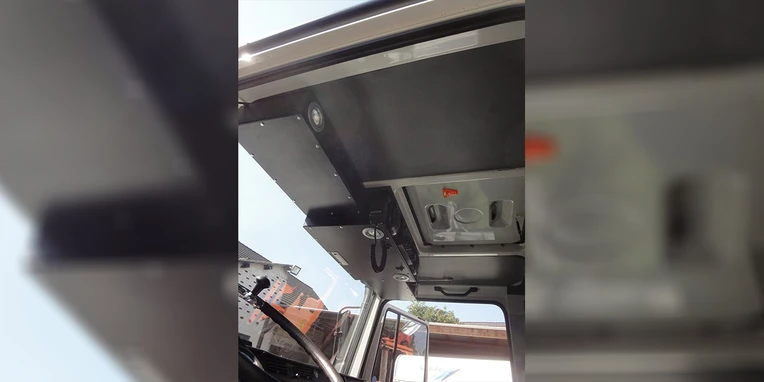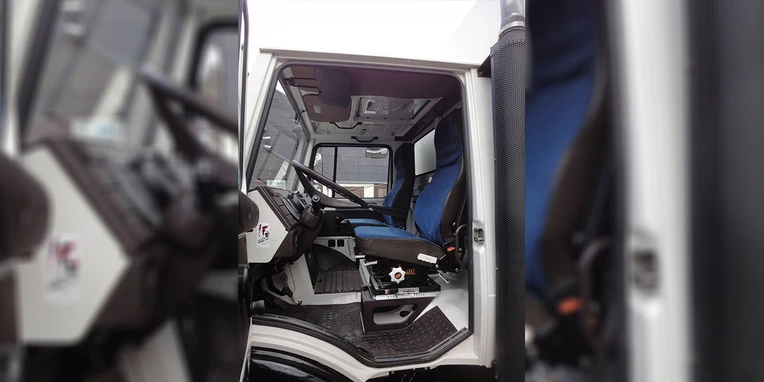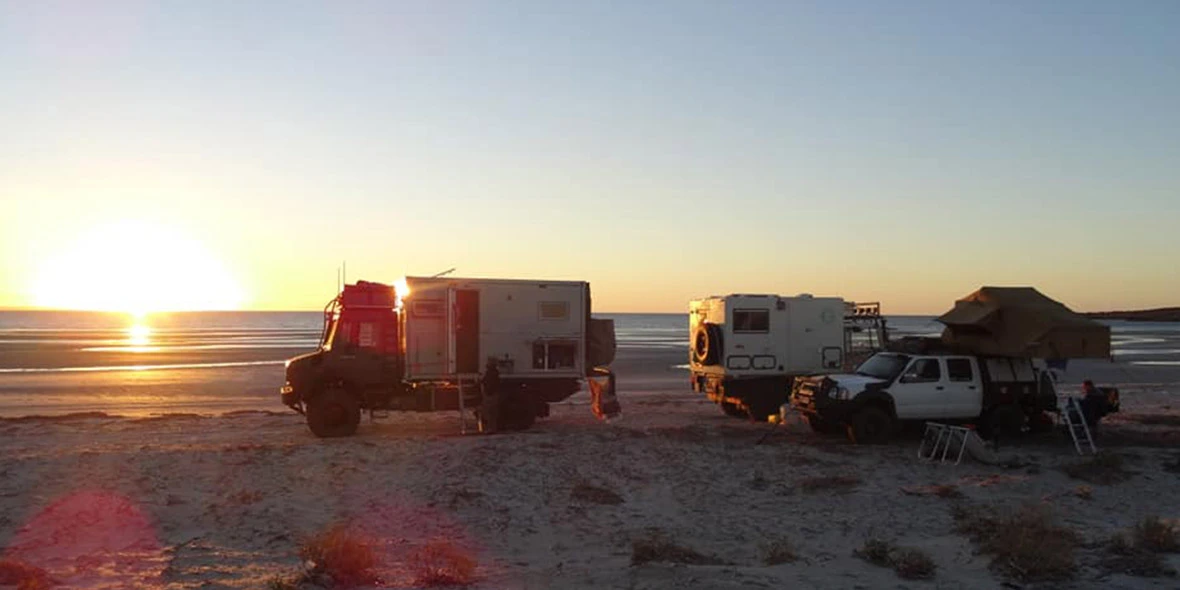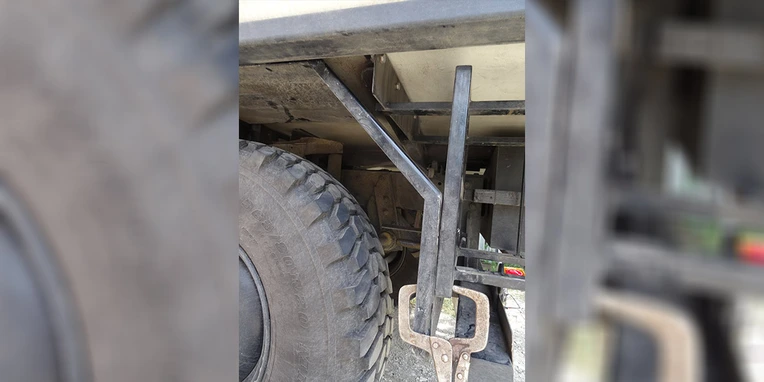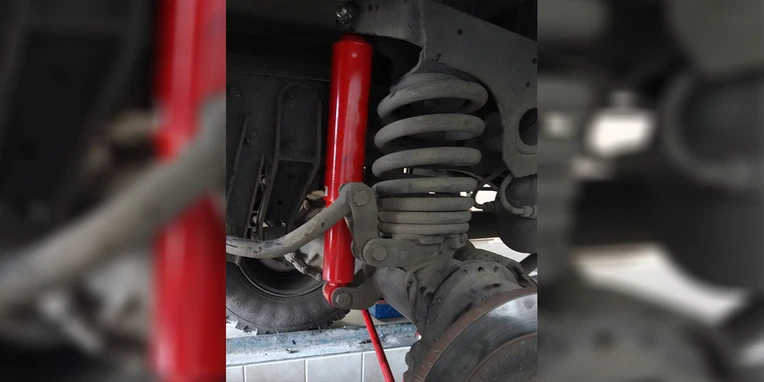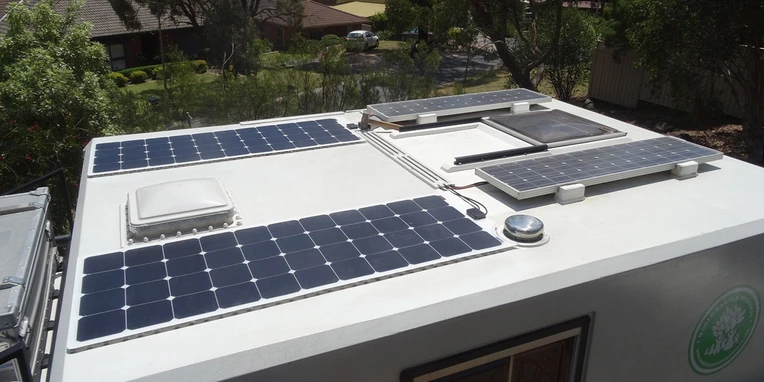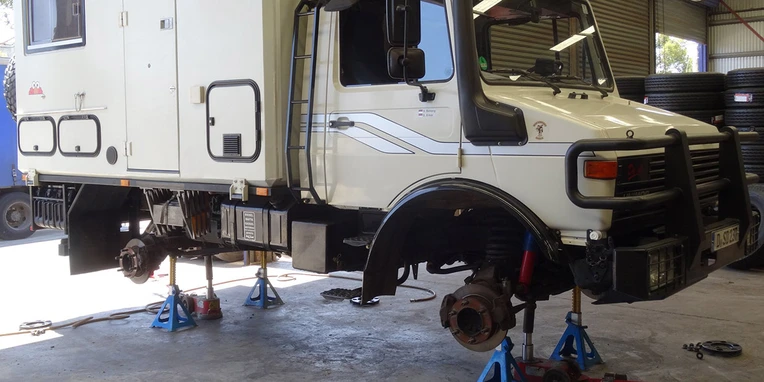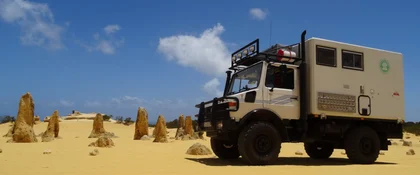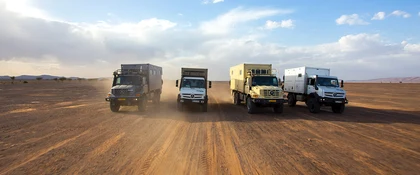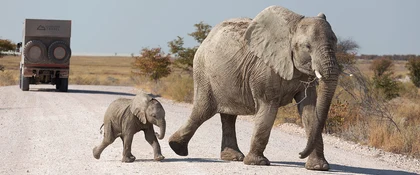Dirk: The other things we added were a roof carrier, a ladder and a bull-bar – all of which we welded on ourselves. And the same was true for the overhead console for the radio, communications equipment and stowage compartments. We then installed suspension seats as used by the military – mechanical, not with air suspension. They came from the ambulance body used by the German armed forces. Then we built a central stowage box. Overall, we sought to create more storage space. At 6.6 tonnes we're still very light though. And that's despite having 200 l of water and 370 l of fuel on-board. That amount of fuel can take us around 2000 km. This is why we installed an auxiliary fuel tank – though we have to pump the fuel from one to the other. Then we gave the Unimog some sound insulation, as we had over 100 dB in the passenger area. Fortunately we found a suitable insulation kit. The new insulation must be 2.5 cm or more in thickness, and it's brought us down to 80 dB. So we can now hold a conversation. On our first trip to Saxony we found that ELMO had problems on gradients. Every truck was passing us with ease. So we increased the engine output. It had 135 hp before, and we uprated it to 164 hp – I didn't want any more than that, though. This solved the problem, and it also pulls away well on hills. Otherwise the engine and transmission are original, just like the drivetrain. We did nothing more to it, except for the shock absorbers. But we were already in Mongolia by then.
New shock absorbers for ELMO.
What led to that? I imagine it was quite complicated to find the right parts in Mongolia.
Dirk: It was due to a design error. When the chassis was installed at the rear – i.e. the mounting plate for the vehicle body, the wings were installed too low. When the shock absorbers started to compress on off-road stretches, the wings would make contact with the tyres. So in the Crimea, I cut off the wings and welded them on higher up. However, this had the effect that the vehicle body was able to oscillate. And we noticed this in the Pamir mountains. We were really frightened when the body started to rock alarmingly. And then we found that the shock absorbers had seen better days. This was one of those things we weren't able to spot beforehand. So we had to find a solution while on the road. My supplier checked the vehicle number and the product number of the shock absorbers, and threw his hands up in the air. "Listen, Dirk", he said, "there's already a fifth generation of these shock absorbers, and they aren't installed any more anyway. You'll need something more up-to-date". So he put together a package, and when we arrived in Mongolia, our parts were already waiting for us. When the shock absorbers were replaced, we also had a major inspection carried out on the Unimog – including the valves etc. After that we practically had a new vehicle.
Wow, what a vehicle we had bought for ourselves. The Unimog showed no damage whatsoever – no seals or anything else.
Dirk Erker, car and motorbike mechanic on a round-the-world trip
And what about maintenance? Is much work needed to keep ELMO fit?
Dirk: I change the engine oil every 20,000 km. I change the front axle oil at 40,000 km, and the front axle has been slightly modified. There are special containers on it, so that the oil doesn't disappear into the axles on fast motorway stretches. I telephoned Gaggenau about this beforehand. They recommended a certain oil for the transmission and portal axles, and it works really well. We found no swarf during oil-changes, only the usual abrasion. In Tajikistan I once overheated the brakes on a downhill stretch – although I really know better. We stopped the vehicle and saw that the brake fluid was leaking from the overflow reservoir. Measuring the temperature showed 200 degrees at the axle. On the next day we had a more detailed look. The brake discs had a slight blue tinge, but that also disappeared after two days. Which really made me think: Wow, what a vehicle we've bought for ourselves. The Unimog showed no damage whatsoever – no seals or anything.
Did you need to modify anything else than the shock absorbers in the Unimog on your travels?
Dirk: In Mongolia we discovered that despite good batteries, we had far too little electrical power in the body. So we decided to find out more about solar power…
Sonja: …and preferably in Australia, where they know a lot about the sun.
Dirk: And that's exactly how it was, too. In Melbourne we got to know a Unimog owner, who told me "We'll get that done at my house – I know how to do it". Then he gave me the name of a shop and told me what parts I needed to buy. So that's what I did, and together we packed 370 watts onto the roof. The alternator is also connected to this system now. That's how we do things: whenever something goes wrong, we sort things along the way.
Sonja: The good thing is that we find places to contact for jobs like this everywhere on our travels, but sometimes we are simply invited.
Dirk: That's right. I have to say, the worldwide Unimog community is enormous. We have already received invitations to Chile and North America. There are people everywhere who drive a Unimog, want to help us and are curious to meet ELMO. We quite often receive messages from people who say "Come and see us, whatever happens!". It's something of a recurring theme throughout the journey.

